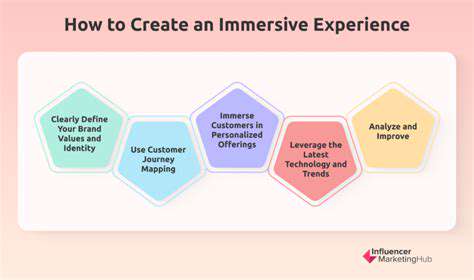How to Get the Best Exchange Rates While Abroad
Choosing Banks for Currency Exchange
Banks often offer competitive exchange rates, particularly for larger transactions. However, it's crucial to compare rates carefully, as bank fees and commissions can significantly impact the final cost. Researching different banks and understanding their specific exchange policies is essential before committing to a transaction. Factors like transaction volume, account type, and any associated membership benefits should also be considered, as these can sometimes influence the exchange rates offered.
Additionally, some banks may have more stringent requirements for currency exchange, such as needing a specific account type or a minimum transaction amount. Understanding these conditions in advance can save you time and potential frustration. It's advisable to contact the bank directly to clarify any questions you may have before initiating the exchange process.
Currency Exchange Shops: A Quick and Convenient Option?
Currency exchange shops are a readily available option for smaller amounts of currency exchange. They usually offer a more convenient location than banks, making them a suitable choice for tourists or individuals needing quick exchanges. However, it's important to be aware that exchange rates at these shops might not always be the most competitive compared to banks or other methods.
Thorough comparison shopping among various currency exchange shops is highly recommended to ensure you're getting the best possible rate. Read reviews and compare fees before making a decision. While convenience is a key advantage, scrutinizing the exchange rates is essential to avoid overpaying.
Using Your Bank Card: A Global Transaction Solution
Using your bank card for international transactions provides a level of convenience and security. Many bank cards offer international transaction services, making it straightforward to exchange currencies when traveling or making online purchases abroad. However, keep in mind that the exchange rates applied may not always be the most favorable. Banks often apply their own exchange rates when processing transactions in foreign currencies using your bank card.
Fees associated with foreign transaction processing can vary significantly depending on your bank and the specific card you're using. It's essential to thoroughly review your bank's terms and conditions regarding international transactions to fully understand the associated costs. Be prepared for potential additional charges, especially if you're making frequent or large transactions.
Comparing Exchange Rates Across Platforms
A crucial step in choosing the right exchange method involves comparing exchange rates across different platforms. This requires careful research and comparison of the rates offered by banks, currency exchange shops, and even online platforms. Tools for comparing exchange rates can be extremely helpful in this process.
Understanding the various fees and commissions associated with each method is just as important. Look for transparent pricing structures that clearly outline all charges. A comprehensive comparison will enable you to make an informed decision and optimize your exchange process.
Considering Transaction Fees and Commissions
Transaction fees and commissions are an essential aspect to consider when choosing an exchange method. Fees can vary significantly between banks, currency exchange shops, and other options. Understanding these fees is crucial for calculating the overall cost of the transaction and ensuring you're getting the best possible deal.
Some exchange methods may have fixed fees, while others may charge a percentage of the transaction value. Always compare the fees and commissions before making a decision. In addition to basic transaction fees, be aware of any hidden or additional charges that might be applied.
Understanding Exchange Rate Fluctuations
Exchange rates are constantly fluctuating, influenced by various global market factors. Understanding these fluctuations and their impact on the exchange rate you receive is vital for making informed decisions. A good understanding of these market forces can help you anticipate potential changes and adapt your exchange strategy accordingly.
Staying updated on current exchange rates and monitoring their trends can be beneficial. Utilizing online tools and resources can provide real-time exchange rate information to help you make informed decisions. This will enable you to take advantage of favorable rates and avoid potential losses due to unexpected fluctuations.
Optimizing Your ATM Usage Strategies
Understanding ATM Fees and Exchange Rates
When using an ATM abroad, it's crucial to understand the fees involved. Many banks and credit unions charge fees for ATM withdrawals, regardless of whether the ATM is part of their network. These fees can vary significantly, sometimes adding up to a substantial amount on your overall transaction cost. Furthermore, the exchange rate applied by the ATM provider can be less favorable than the one you get through your bank's foreign exchange service. Knowing these factors ahead of time will help you make informed choices to minimize your expenses.
In addition to ATM withdrawal fees, be mindful of potential foreign transaction fees. These fees are often added on top of the ATM withdrawal fee and the exchange rate markup, and can quickly accumulate. It's important to compare fees and exchange rates from different providers to find the most cost-effective option. Understanding how these fees are calculated and how they impact your overall expenditure is key to maximizing your travel budget.
Choosing the Right ATM
Selecting the right ATM is paramount to minimizing costs. Prioritize ATMs that are part of your bank's or credit union's network, as these often have lower or no ATM withdrawal fees. If you're traveling to a country where your bank's network is not extensively represented, consider using ATMs of major international networks such as Cirrus or Plus. Researching ATM locations beforehand, especially in less populated areas, can help ensure you're not caught without a suitable ATM option.
Consider the convenience and security of your choice. Ideally, opt for ATMs located in well-lit and populated areas, as this can reduce the risk of theft or scams. A secure ATM environment is a vital factor for peace of mind during your travels. Weigh the proximity to your lodging, the security of the location, and the potential for higher or lower fees when making your selection. These factors will help you find an ideal ATM location.
Utilizing Your Bank's Travel Services
Before your trip, get in touch with your bank and inquire about their international ATM fees and exchange rate policies. Many financial institutions offer travel-specific packages or services that can significantly reduce your costs when using ATMs abroad. They can provide you with valuable insights and resources that can help you avoid unexpected fees and ensure you get the best possible exchange rates. Actively leveraging your bank's resources will likely improve your experience and save you money.
Your bank might also offer a travel credit card with no foreign transaction fees. This can be a great way to minimize expenses. Many banks have specific programs that are designed to help travelers avoid costly surprises. Review these services thoroughly to see how they can benefit your trip. The savings you can gain by using your bank's travel services could significantly impact your overall travel budget, and it's essential to take advantage of such resources.
Planning Your Cash Needs in Advance
Planning your cash needs in advance is crucial to minimize ATM usage and associated fees. Calculate the amount of cash you'll require for your trip and try to withdraw larger sums less frequently. This will limit the overall number of transactions and, consequently, the fees you accumulate. This proactive approach will save you time and money during your travels.
Consider using a combination of ATM withdrawals and credit card payments for purchases. This strategy allows you to manage your cash flow effectively and avoid excessive ATM use. By strategically managing your cash needs, you can significantly reduce the cost of your ATM transactions and enhance your overall travel experience.






![How to Use Airport Lounges [Even Without Business Class]](/static/images/27/2025-06/StrategicPartnershipsandGuestPasses.jpg)
![Packing Guide for a Camping Trip [What You Need]](/static/images/27/2025-06/NavigationandSafetyGearforaSecureAdventure.jpg)

![How to Learn Basic [Language, e.g., Spanish] for Travel](/static/images/27/2025-07/NavigatingEverydaySituationswithConfidence.jpg)

![How to Learn Basic Phrases for [Specific Language, e.g., Japanese]](/static/images/27/2025-07/EssentialGreetingsandIntroductionsinJapanese.jpg)